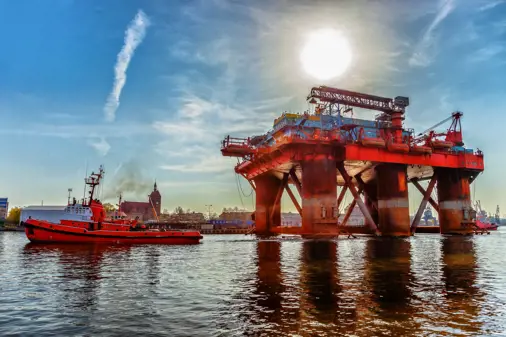
Strict requirements from Norwegian offshore market
The Norwegian offshore marketplaces strict requirements on suppliers. The Norwegian standards for the oil and gas industry, NORSOK, mean that companies have to make an effort to optimise both products and processes if they want to be qualified for the attractive offshore market.
The Norwegian offshore market is lucrative for a number of subcontractors as activity levels are high due to both the older rigs that need servicing and the new rigs that are being added continuously. The entire industry is dependent on stable and flexible suppliers, who not only deliver the correct product, often within a short timeframe, but who also meet the high standards set out for the products used in the industry.
The Norwegian oil and gas industry has set out a great number of standards through NORSOK, which means that suppliers and subcontractors have to make additional efforts to qualify to supply products to the offshore market. This spans everything from the quality of the paint to the components used on rigs and the suppliers’ existing professional qualifications.
High quality and excellent references
Immense growth in the Norwegian oil and gas industry in recent years has resulted in increased focus on the market. One of the organisations that keeps its finger on the pulse when it comes to the booming Norwegian offshore industry is the Danish Export Association. The Business Manager for oil and gas, Merethe Wrang, also finds that there are strict requirements for suppliers in Norway:
“Companies need to demonstrate high levels of quality and safety if they are to meet the requirements set out for some of the large projects in Norway. It is also an advantage to be able to supply references from the oil and gas industry. A good network, resulting in new contacts and customers, is also one of the rules of play,” Merete Wrang explains.
Danish advantage from the crisis
But there is every reason to focus on NORSOK as the Norwegian petroleum industry is very attractive to Danish companies, who actually have one unique advantage:
“There is still enormous potential in the Norwegian offshore market. And unlike the Norwegian companies, Denmark has experienced a crisis, which means that we have scaled down operations and costs. Currently Norway is focusing on keeping costs down in the oil and gas industry and this is something Danish companies could reap benefits from being involved with,” says Merethe Wrang.
Hoyer sees opportunities
Hoyer has experience of the NORSOK standards when it comes to painting motors, for example, and this is just one more skill to add to the company’s list of expertise when it comes to the offshore industry. Specifically, this relates to NORSOK standard M501, which covers the painting of steel and cast-iron motors, etc. Administratively, the standard comprises 32 pages of guidelines, detailing everything from the thickness of the coats of paint to the qualifications that must be held by those performing paint work.
“The documentation work is very demanding when working with NORSOK standards. We have a Quality department which reads through the standards and subsequently creates procedures. This is an extensive process. But we have had great success, and we get positive feedback from our customers. And we can definitely see more opportunities within that segment,” explains Loke Svendsen, Country Manager for Hoyer in Norway.
NORSOK facts
- The NORSOK standards are administered by Standards Norway and developed by the industry itself. NORSOK stands for Norsk Sokkels Konkurranseposisjon (the competitive position of the Norwegian continental shelf).
- The NORSOK standards are feature-based. This means that requirements are set out with regard to product features rather than how they are manufactured. As such the standards provide room for interpretation.
- Standards Norway works closely with the Norwegian oil and gas industry to ensure that the standards remain up-to-date and comply with the increasing requirements in the industry at all times. This includes risk reduction, working environment and cost-efficiency.
- There are approximately 100 different NORSOK standards: an overview and more information about Norwegian standards within the petroleum industry can be found at www.standard.no/petroleum.
